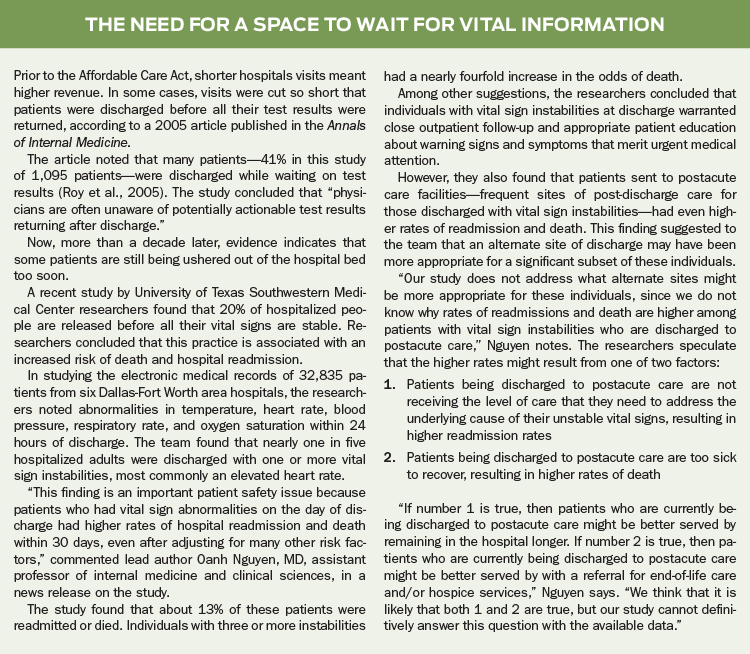Exploring Post-Discharge Spaces Designed to Eliminate Gaps in Care
Examples cited in the ECRI report include the Bridge Clinic of San Francisco General Hospital, where patients are set up with an appointment and contact information for the post-discharge clinic prior to leaving the hospital. At that appointment, the clinician might review medication use, help refill prescriptions, discuss last-minute test results, and ensure care is on track. The clinician also provides further patient education, encouraging self-diagnosis. And at Beth Israel Deaconess Medical Center in Boston, a computer algorithm identifies patients who have not listed a primary care physician or who can’t make a follow-up appointment with their primary care physician within two weeks of discharge, automatically referring those patients to Beth Israel’s post-discharge clinic.
“Many more of these clinics and care models have emerged,” notes Diane Robertson, director of ECRI Institute’s health technology assessment information services. She adds, “They take a lot of different forms—some systems set up clinics, others just have a person dedicated to the post-discharge care in the facility setting. Sometimes they have the patient come back to the actual clinic for their follow-up visit. Other times they’ll use that transitional care person to set up appointments with a primary care physician out in the community to ensure that patient has that first follow-up appointment.”

